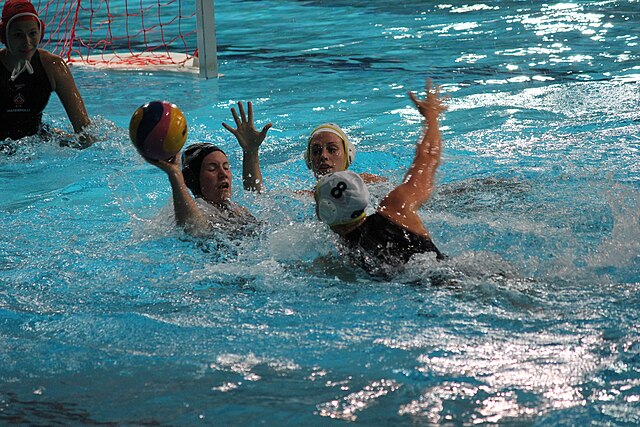The rules of water polo are the rules and regulations which cover the play, procedure, equipment and officiating of water polo. These rules are similar throughout the world, although slight variations do occur regionally and depending on the governing body. Governing bodies of water polo include FINA, the international governing organization for the rules; the NCAA, which govern the rules for collegiate matches in the United States; the NFHS, which govern the rules in high schools in the USA; and the IOC, which govern the rules at Olympic events.
The sprint (swim-off).
Five meter penalty shooting
A water polo referee standing in front of the table officials.
Water polo is a competitive team sport played in water between two teams of seven players each. The game consists of four quarters in which the teams attempt to score goals by throwing the ball into the opposing team's goal. The team with the most goals at the end of the game wins the match. Each team is made up of six field players and one goalkeeper. Excluding the goalkeeper, players participate in both offensive and defensive roles. It is typically played in an all-deep pool where players cannot touch the bottom.
Greece (white) and Hungary (blue) play a water polo match at the World Junior Championships 2004 in Naples, Italy.
Goalkeeper blocking a shot
A classic 4–2 man-up situation. The attacking white team has 4 players positioned on 2 metres, and 2 players positioned on 4 metres. The 5 outfield defending blue players try to block shots and prevent a goal being scored for the 20 seconds of man-down play. In the top left corner, the shot clock can be seen, showing 28 seconds remaining in the white attack.
Water polo defense: A defender may only hold, block or pull an opponent who is touching or holding the ball.







